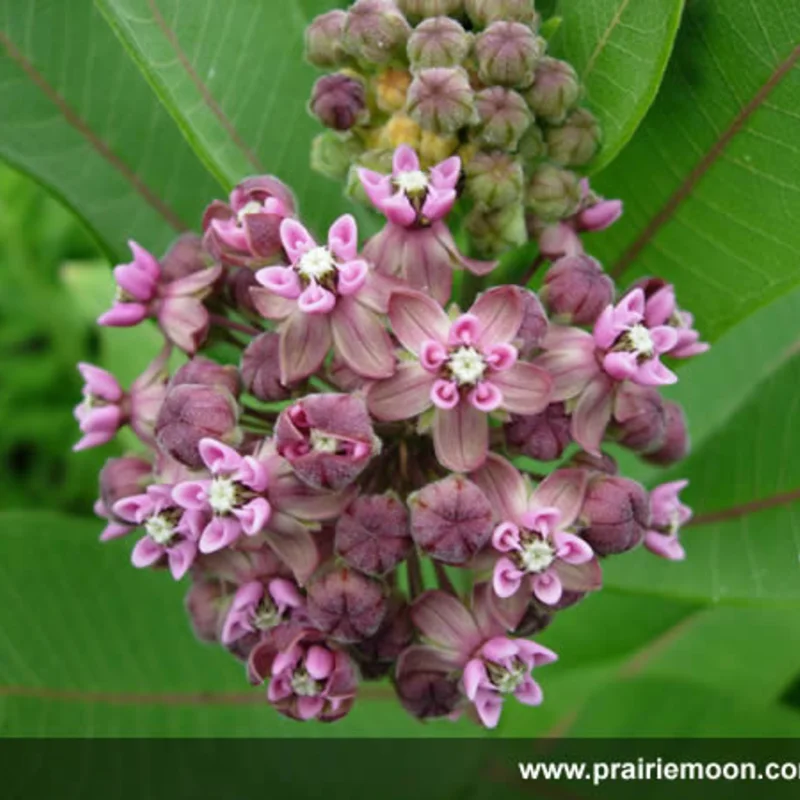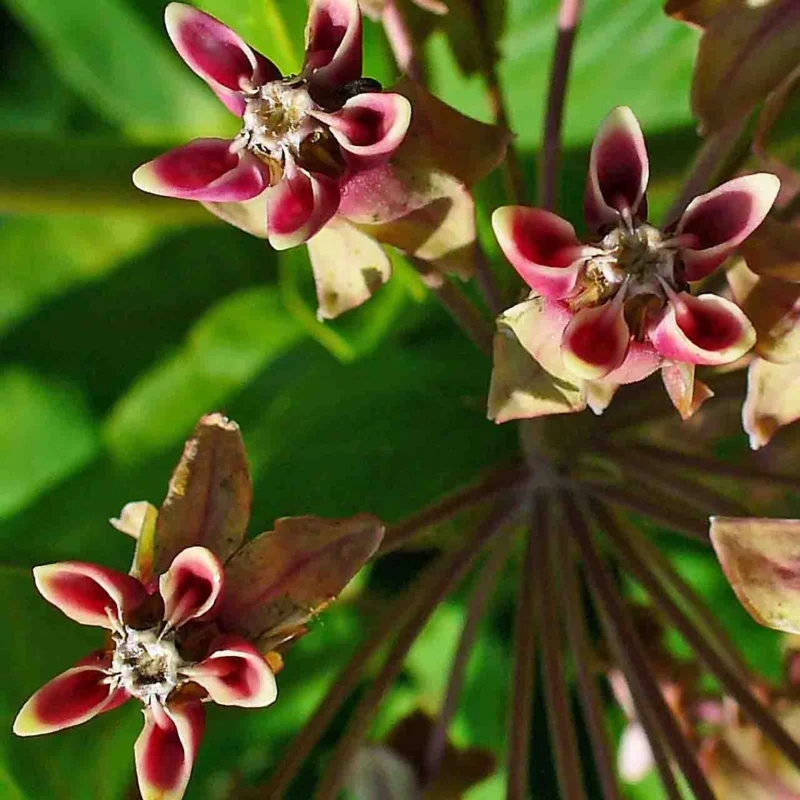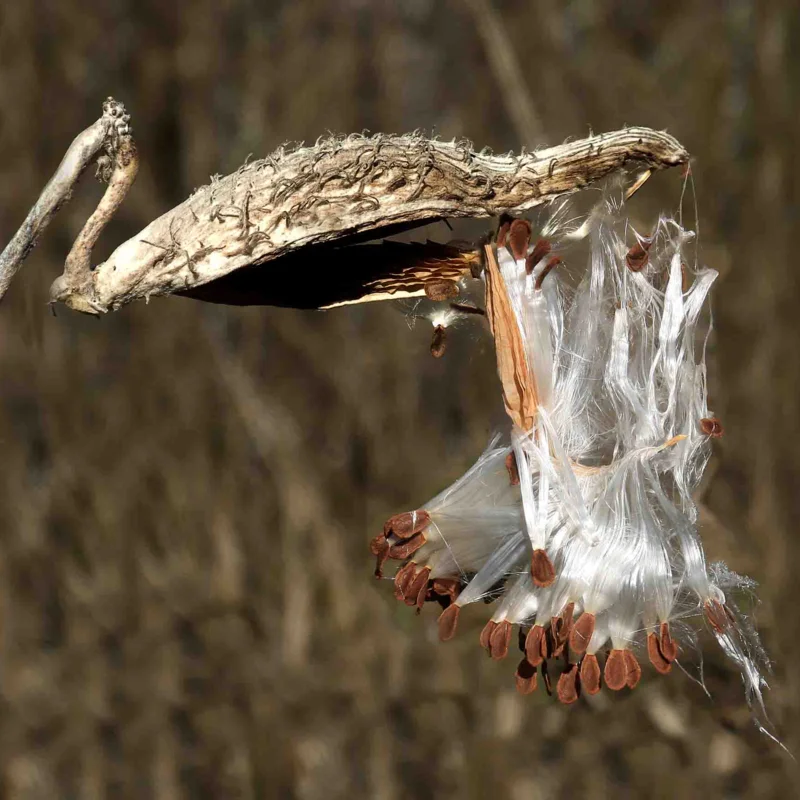Asclepias syriaca
This species reaches up to 2 m in height and produces an abundance of pink-red flowers whose buds and immature pods can be eaten like vegetables.
Highly nectariferous, it is appreciated by hummingbirds, butterflies and other pollinators.
These products may also be of interest to you
in bucket
Perennial seeds require a wintering period for germination. Place them in the fridge for 60 days before sowing in spring. Sow in trays, covering the seeds lightly. When the plants have 5 to 6 leaves, transplant into individual cups or directly into warmed soil. Autumn sowing is done in the same way and left outdoors until spring.
Germination takes from 30 to 90 days at between 13°C and 23°C.
February, March, April, September, October, November
June, July, August, September
in the ground, in pot
sunny
low
limestone, sandy, humus, potting soil
drained, wet, light
Asclepias syriaca
mid-season
50 seeds
Pink, Red
From 150 to 200 cm
From 10 to 12 cm
elongated
North America
The flower buds and immature pods are eaten like vegetables. This species was commonly used by Amerindian peoples (Iroquois, Cherokee, Ojibwa, Potawatomi, Menomenee, Ponca...) as a food plant or to treat dermatological problems (latex from the plant was applied to treat warts and ringworm), venereal diseases, sterility and kidney stones. Some Native American peoples used the stem fibers to make fishing line, sewing thread, bowstrings, etc., and also used the stem latex to insert precious stones into jewelry. Early doctors in the USA used it to treat asthma and rheumatism. Asclepias seeds contain 20% oil (polyunsaturated triglycerides) and 30% protein. What's more, this species is widely cultivated for its cottony seeds, which are used to make hypoallergenic pillows. Seed cakes and pods have also been shown to be nematocidal (against root-knot nematodes) and insecticidal (against American corn borer). In 2000 and 2007, researcher Rotinberg published his research on the antitumoral and antineoplastic actions of an alkaline extract of the leaves of this Asclepias species.














